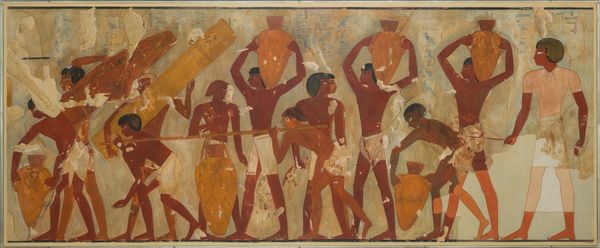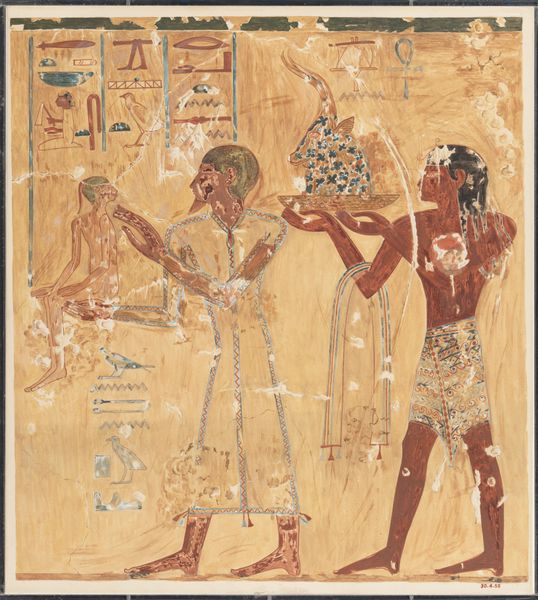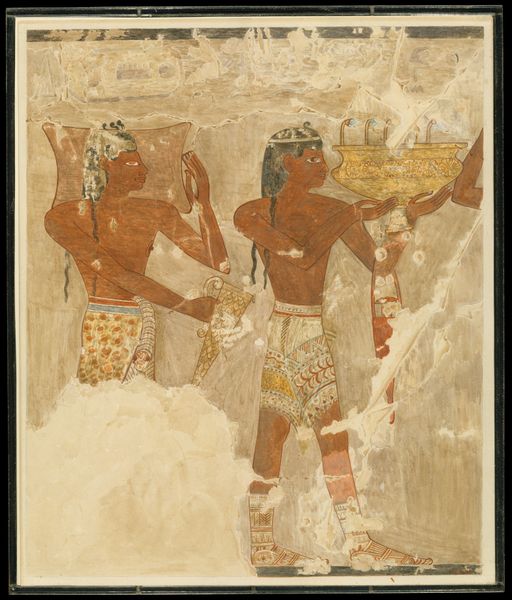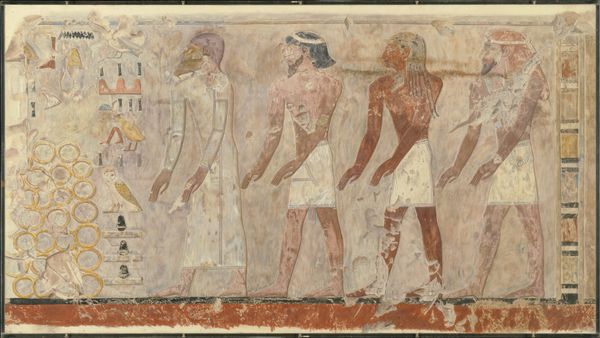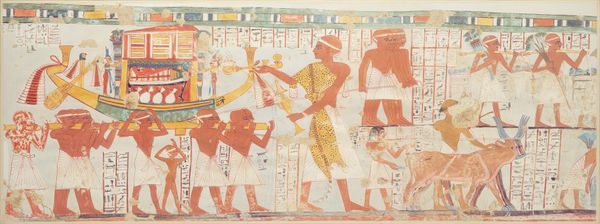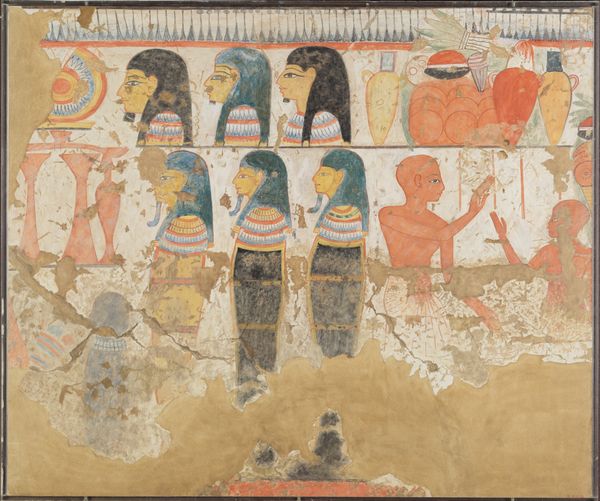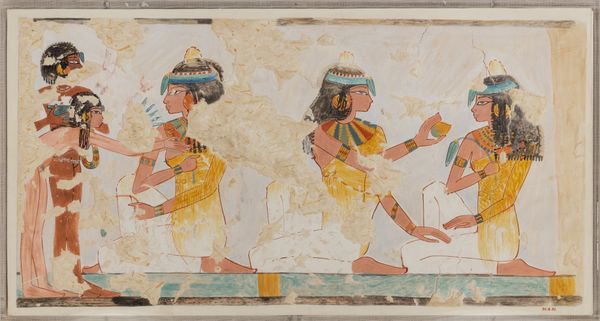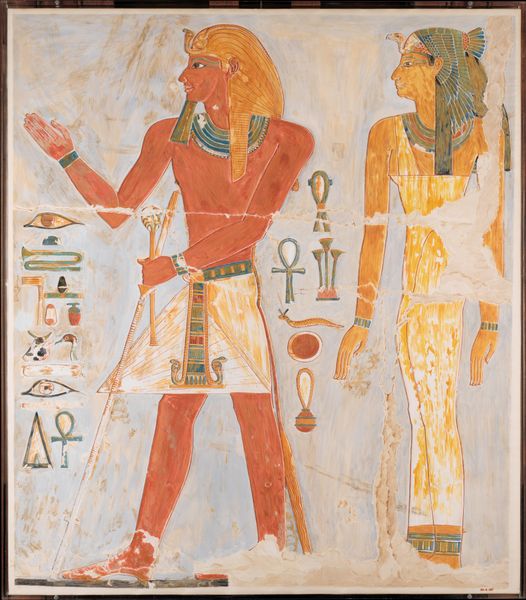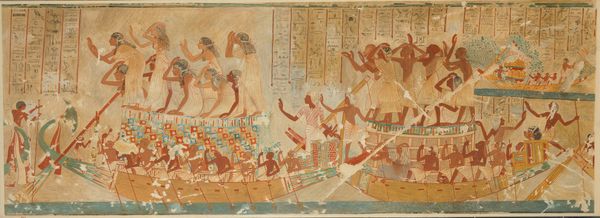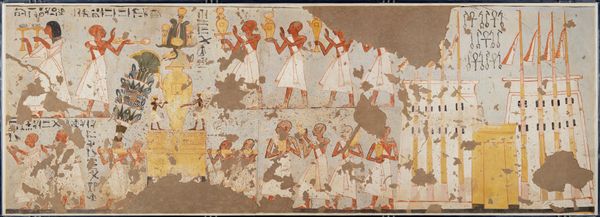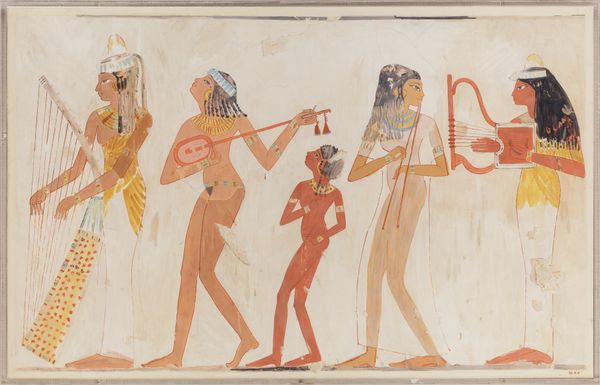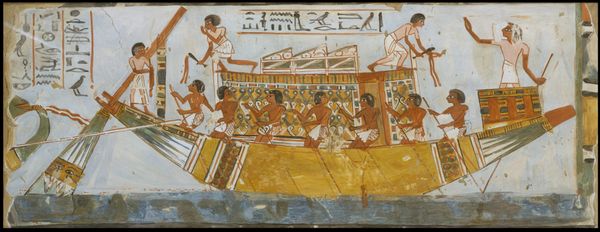
fresco, mural
#
water colours
#
ancient-egyptian-art
#
figuration
#
mural art
#
fresco
#
egypt
#
ancient-mediterranean
#
history-painting
#
mural
Dimensions: H. 47.3 × W. 48.4 cm (18 5/8 × 19 1/16 in.); scale 1:1; framed: H. 48.5 × W. 49.9 cm (19 1/8 × 19 5/8 in.)
Copyright: Public Domain
Editor: Here we have "Cretans Bringing Gifts," a fresco from the Tomb of Rekhmire, dating back to 1479 BC. What strikes me immediately is how the materials and the act of making are so visible. I mean, you can practically see the layers of paint, the texture of the wall. What are your thoughts on that, given its historical context? Curator: Precisely. The very visible labor involved in creating this image speaks volumes. Consider the fresco technique itself - pigment ground and applied meticulously to wet plaster. This wasn't just artistic expression; it was a complex process involving skilled artisans, materials sourced and prepared through extensive labor. Editor: It really shifts your perspective, thinking about the hands that mixed the paint, prepped the wall. It’s not just some abstract image but the product of a collaborative effort. Curator: Absolutely. And look closer. The gifts, depicted so prominently, also represent a culmination of material resources and skilled craftsmanship. Who controlled access to these precious materials? Who benefitted from their display? We must think about these figures from Crete and their connection to ancient Egyptian trading systems, labor conditions, and power structures. The mural is literally *material* evidence of this. Editor: So, reading the art means examining the supply chains and labour practices of the time? I'd never thought of ancient art that way. Curator: Precisely. Even the scale is revealing - murals demand large work teams. Consider, too, that they adorn a tomb, a site laden with material culture intended to equip the deceased in the afterlife. Think about the mining, the carving, the transport... It highlights the intimate connections between art, labor, and beliefs about consumption in ancient Egyptian society. Editor: Wow, seeing it this way connects art with, like, economics and social structures of the period! Curator: Exactly. The "Cretans Bringing Gifts" isn't just a depiction; it is also a cultural artifact revealing material systems of its time. Editor: That's so cool - it is like archaeology, only you’re excavating the meaning. Curator: In a way, yes. By examining materiality and production, we unearthed richer insight of this historical moment.
Comments
No comments
Be the first to comment and join the conversation on the ultimate creative platform.
